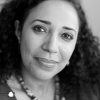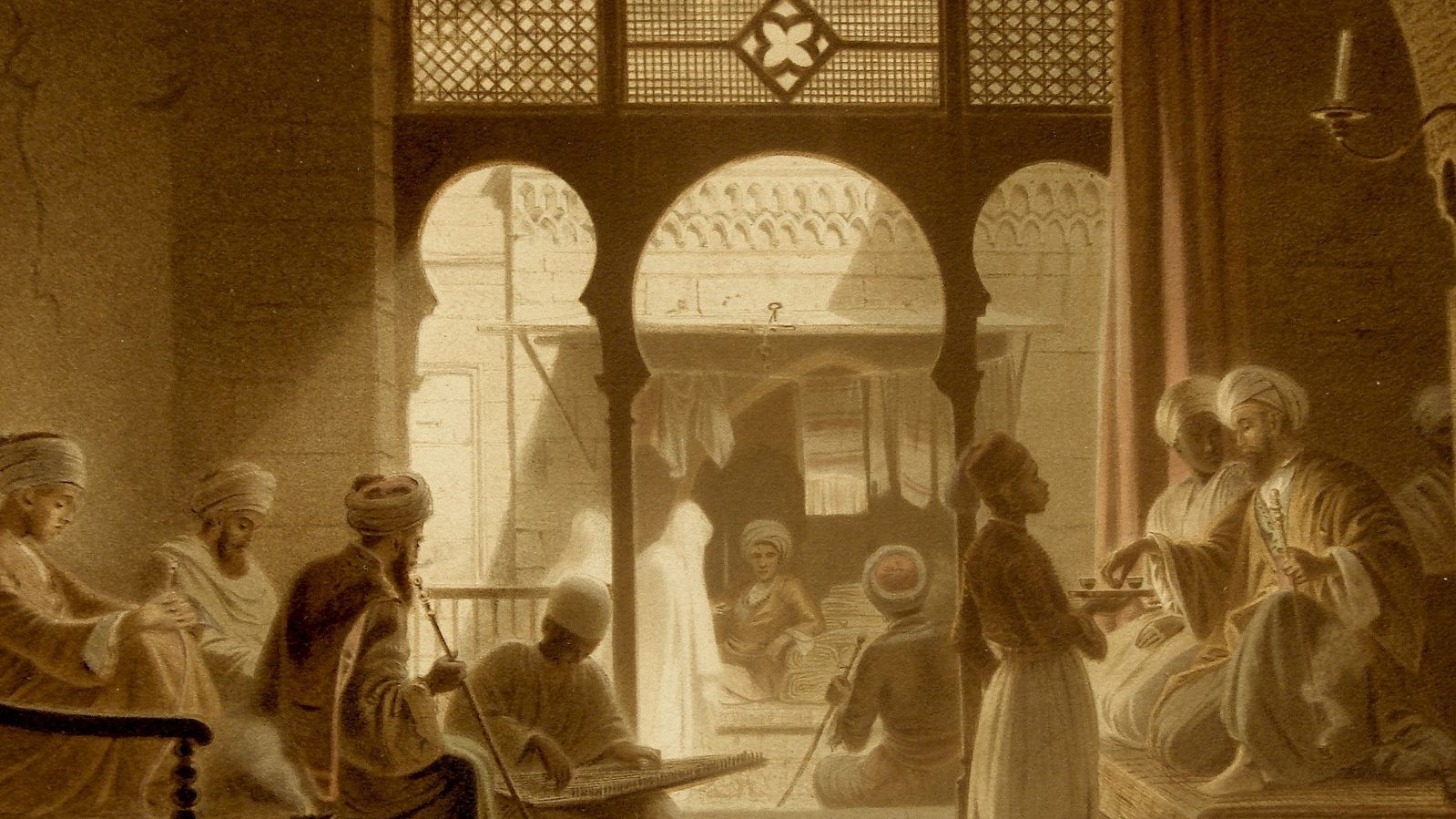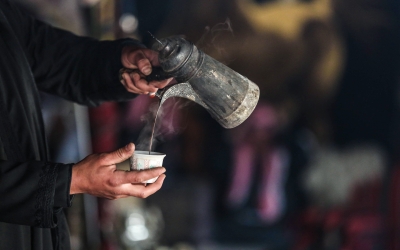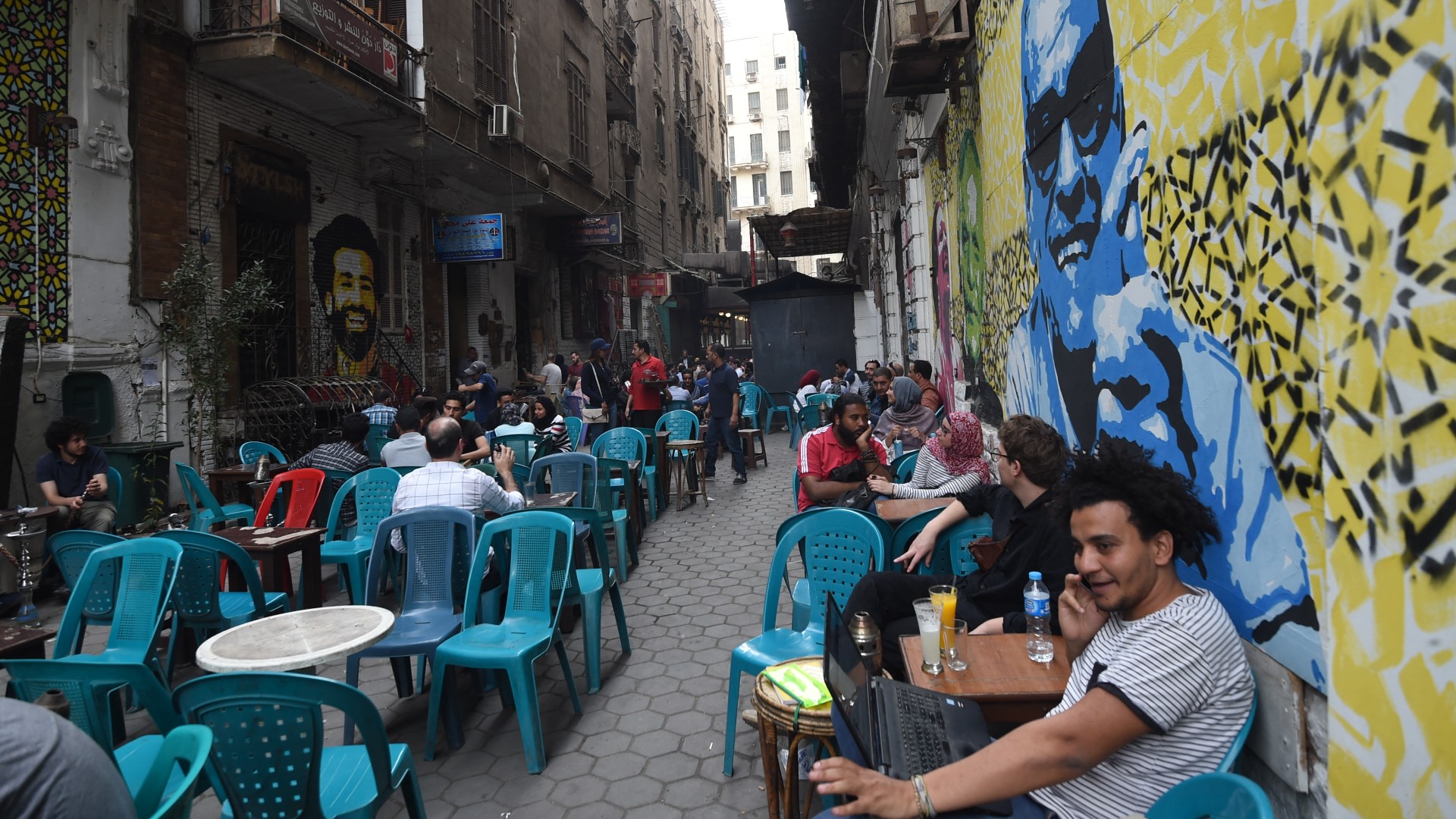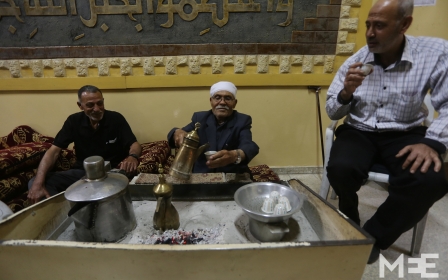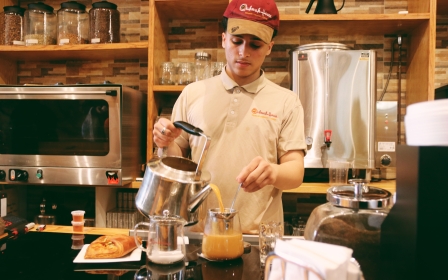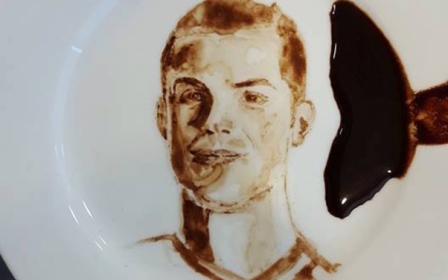Cairo coffeehouses are where 'the real Egypt' can be found
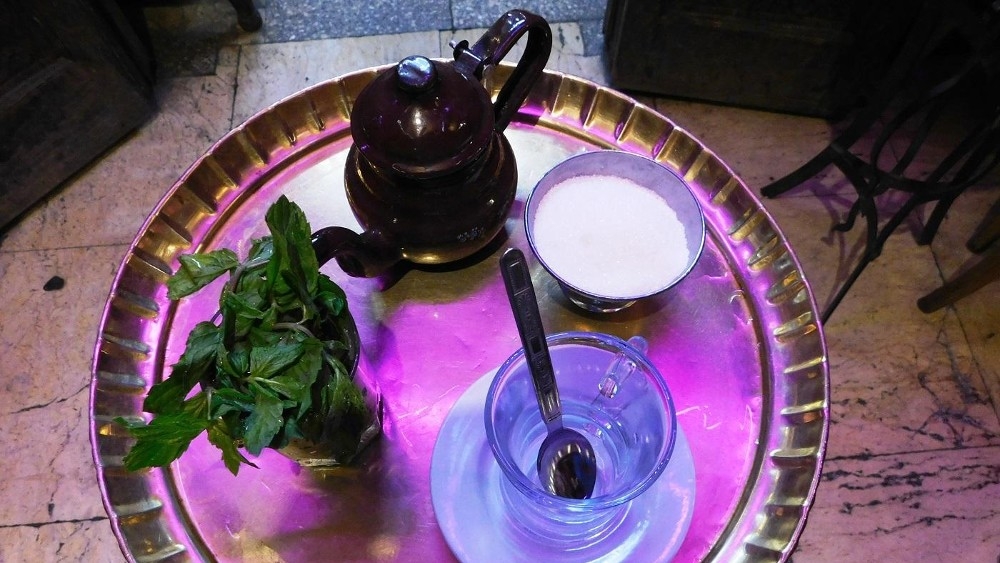
When Amina Elbendary and I first embarked on our book project The Egyptian Coffeehouse: Culture, Politics and Urban Space, published in November 2020, we were fascinated by the role that the coffeehouse has played for centuries in Egyptian public life, particularly in urban centres. Our aim was to underscore the centrality of the coffeehouse since its early inception in the 16th century to the present day, as a marker of a collective sense of belonging and identity - a sort of “Egyptian-ness”.
The coffeehouse became an extension of the home - a place of familiarity, where waiters and regulars knew each other and developed bonds and alliances
The coffeehouse is a social space created and shaped by the people themselves in their own neighbourhoods, and on city squares and streets.
It is a microcosm of broader Egyptian society, with its history of multiculturalism and diversity. In a way, the Egyptian coffeehouse subverts archaic forms of institutionalisation and social exclusion.
It has thus occupied in the popular imagination a sphere replete with new ideas, stories, memories and social networks.
Representations of the coffeehouse have taken countless forms in Egyptian literary works, films, songs, photographs, and radio and television programmes. It has also historically played a key role in political mobilisation, as well as being a place to meet potential employers.
But despite the coffeehouse’s cultural centrality and sociopolitical importance in Egypt, in-depth academic research and publications on its significance remain sparse. This was the key reason why we decided to write our book.
In Egypt, there are two widespread types of the coffeehouse: the traditional café, found in almost every neighbourhood and usually dominated by men smoking shisha, and the historical-cultural coffeehouse, such as the well-known Café Riche on Talaat Harb street in downtown Cairo, open to both men and women of various backgrounds and age groups.
Gender and class relations
Since the turn of the century, there has been an increasing proliferation, particularly in middle- and upper-class suburbs, of famous global coffeeshop chains, such as Starbucks and Costa Coffee, alongside local outlets, such as Cilantro and Beano’s, which emulate the global chains. These newer coffeeshops are more popular among youth and can also be found in large shopping malls and five-star hotels.
People frequent different coffeeshops on different occasions. In our book, we focus mainly on the traditional café and the historical-cultural coffeehouse, as opposed to the westernised chains. But we also draw essential comparisons between traditional and modern coffeeshops as a way of exploring gender and class relations.
Through our research, we found that the Egyptian coffeehouse best captures Henri Lefebvre’s notion of “social space”. In his seminal work The Production of Space, Lefebvre argues that social space is “what permits fresh actions to occur, while suggesting others and prohibiting yet others … Social space implies a great diversity of knowledge.”
Social space also embodies political acts. According to Lefebvre, when we discuss space, we must also consider what or who occupies this space, and the interrelationships and activities that take place within it during a given period of time. The notion of the coffeehouse as a social space capable of producing new relationships and networks was central to our book.
In attempting to situate the expansion of outdoor cafés in Cairo and other Egyptian cities, such as Alexandria and Port Said, we engaged with what scholar Asef Bayat termed “the city-inside-out”. According to Bayat, neoliberal economic policies in Middle Eastern countries have led to significant spatial implications for marginalised communities, particularly in urban areas.
We thus argue in our book that in response to increasing unemployment in Egyptian cities, new outdoor traditional cafés have aided the expansion of the informal sector and casual work. They can be opened anywhere: on side streets, slums and even courtyards between buildings. Outdoor cafés are a striking example of the concept proposed by Bayat: the city is inside out.
Between public and private life
With their emergence in the 16th century during the early Ottoman period, coffeehouses provided Cairenes - especially adult men - with a new public space for socialising. Coffeehouses were of different sizes and degrees of sophistication; some were no more than stalls in a market, while others were larger, with wide seating areas. Located at ground level, they would open onto the street, allowing customers to sit outdoors.
This openness and proximity to the street, juxtaposed with activities typically associated with the home - such as drinking, smoking, socialising and enjoying various forms of entertainment - meant that coffeehouses occupied a space in between the public and the private spheres, allowing for new types of interactions between people. Over time, they became places to share news and gossip, play games and agree on trade deals.
For many men, the coffeehouse became an extension of the home - a place of familiarity, where waiters and regulars knew each other and developed bonds and alliances; a refuge in sometimes harsh cities.
And while some cultural and social practices were popular with the elites and their entourage before gaining a wider following, in the case of coffee and its culture, the opposite was true. Coffee gained popularity first among the popular urban classes before spreading to higher levels of society.
From their earliest days, coffeehouses were loci of popular culture, whether in the form of popular spiritual practices, such as the dhikr gatherings of the Sufis, or in the form of narrative readings of popular epics and vernacular poetry. More recently, they have become sites for watching television dramas and football matches.
The intricately connected roles of socialisation and culture within Egyptian coffeehouses have led to their depiction in fiction, cinema, drama and music. From the master novelist Naguib Mahfouz to filmmakers such as Salah Abu Seif and Ali Badrakhan, authors and artists have used the space of the coffeehouse as both a microcosm of Egyptian society and a reflection of sociopolitical debates. In the coffeehouse, relations of power are played out, and the city comes inside out.
'Part of the fabric of society'
We also explored the sentiments and experiences of café culture through the lens of six residents of Cairo who shared with us, in extended interviews, their reflections on their favourite coffeehouses in Cairo and Alexandria.
Through their stories, we were able to better understand the position of coffeehouses within the social scene, and to appreciate their depiction in literary and artistic works.
One crucial point made by our interviewees was how the traditional café functions as a mirror of society, a metaphor we investigated at length in literary works by renowned writers such as Mahfouz, Ibrahim Aslan and Gamal al-Ghitani, and in films such as Black Market (1945), Karnak Café (1975) and The Water-Carrier is Dead (1977). As one of our interviewees said, the traditional café “is part of the fabric of society, and its dynamics change along with the change in the society itself”.
In literature and cinema, as in real life, many revolts begin at the doorsteps of the café
Indeed, it is not even conceivable to imagine the Egyptian city or village without them. Which coffeeshop a person frequents, and whether it is a local neighbourhood café or a branch of a chain, comprises a social and political statement that functions as a marker of identity.
Another significant concept that we developed in the book was how the coffeehouse is not just a place for people with ideas; it is so inclusive and diverse that our interviewees repeatedly said it is “where the real Egypt is to be found”.
The notion of the café as a key place to get the pulse of the nation is reflected in the practices of ruling authorities, which at least since the 19th century have relied on reports of informants placed at cafés to gauge public opinion, and in the narratives of authors who highlight their political importance. In literature and cinema, as in real life, many revolts begin at the doorsteps of the café.
We hope that our contribution to this lively subject will open up further studies on coffeehouses throughout the Arab world, and comparative analyses of café culture in other parts of the globe.
The views expressed in this article belong to the author and do not necessarily reflect the editorial policy of Middle East Eye.
Middle East Eye propose une couverture et une analyse indépendantes et incomparables du Moyen-Orient, de l’Afrique du Nord et d’autres régions du monde. Pour en savoir plus sur la reprise de ce contenu et les frais qui s’appliquent, veuillez remplir ce formulaire [en anglais]. Pour en savoir plus sur MEE, cliquez ici [en anglais].


